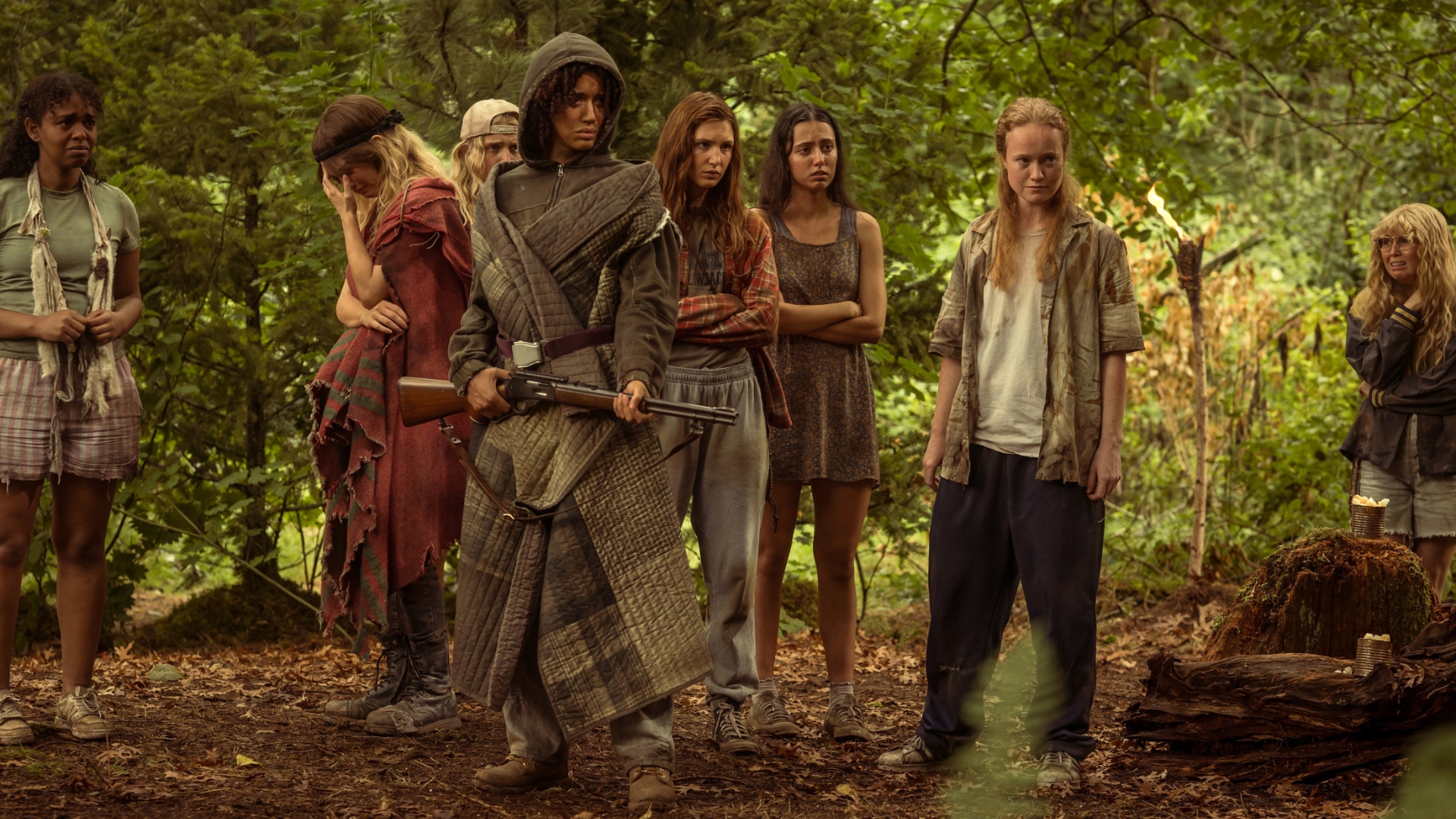
WWW.ENGADGET.COM
The best Chromebook you can buy in 2025
You might be tempted to get a Chromebook as your next laptop and we wouldnt blame you. Chrome OS has come a long way: Chromebooks today have a good combination of build quality, battery life and power while also supporting years of software updates that will take you years into the future. If you primarily browse the web, or dont need a ton of extra software on a regular basis, a Chromebook can be a powerful daily driver.While Google did make things simpler last fall by introducing the Chromebook Plus initiative (more on that below), there are still multiple things to keep in mind when shopping for a new Chromebook. The market is saturated with machines at different price points and power levels; Ive been testing and reviewing Chromebooks for years and know what you should be looking for, and what you can expect out of these laptops. What is Chrome OS, and why would I use it over Windows? This is probably the number one question about Chromebooks. There are plenty of inexpensive Windows laptops on the market, so why bother with Chrome's operating system? Glad you asked. For me, the simple and clean nature of Chrome OS is a big selling point. Chrome OS is based on Googles Chrome browser, which means most of the programs you can run are web based. Theres no bloatware or unwanted apps to uninstall like you often get on Windows laptops, it boots up in seconds, and you can completely reset to factory settings almost as quickly. Of course, simplicity will also be a major drawback for some users. Not being able to install native software can be a dealbreaker if youre a video editor or software developer. But there are also plenty of people who do the majority of their work in a web browser. Google and its software partners are getting better every year at supporting more advanced features. For example, Google added video editing tools to the Google Photos app on Chromebooks it wont replace Adobe Premiere, but it should be handy for a lot of people. Similarly, Google and Adobe announced Photoshop on the web last year, something that brings much of the power of Adobes desktop apps to Chromebooks. Chromebooks can also run Android apps, which greatly expands the amount of software available. The quality varies widely, but it means you can do more with a Chromebook beyond just web-based apps. For example, you can install the Netflix app and save videos for offline watching. Other Android apps like Microsoft Office and Adobe Lightroom are surprisingly capable as well. Between Android apps and a general improvement in web apps, Chromebooks are more than just portals to a browser. What do Chromebooks do well? Photo by Nathan Ingraham / Engadget Put simply, web browsing and really anything web based. Online shopping, streaming music and video and using various social media sites are among the most common daily tasks people do on Chromebooks. As you might expect, they also work well with Google services like Photos, Docs, Gmail, Drive, Keep and so on. Yes, any computer that can run Chrome can do that too, but the lightweight nature of Google Chrome OS makes it a responsive and stable platform. As I mentioned before, Chrome OS can run Android apps, so if youre an Android user youll find some nice ties between the platforms. You can get most of the same apps that are on your phone on a Chromebook and keep info in sync between them. You can also use some Android phones as a security key for your Chromebook or instantly tether your laptop to use mobile data. Google continues to tout security as a major differentiator for Chromebooks, and its definitely a factor worth considering. Auto-updates are the first lines of defense: Chrome OS updates download quickly in the background and a fast reboot is all it takes to install the latest version. Google says that each webpage and app on a Chromebook runs in its own sandbox as well, so any security threats are contained to that individual app. Finally, Chrome OS has a self-check called Verified Boot that runs every time a device starts up. Beyond all this, the simple fact that you generally cant install traditional apps on a Chromebook means there are fewer ways for bad actors to access the system. If youre interested in Googles Gemini AI tools, a Chromebook is a good option as well. Every Chromebook in our top picks comes with a full year of the Google One AI Premium plan this combines the usual Google One perks like 2TB of storage and 10 percent back in purchases from the Google Store with a bunch of AI tools. Youll get access to Gemini in Gmail, Docs and other apps, Gemini Advanced (which runs on the 1.5 Pro model) and more. Given that this plan is $20/month, its a pretty solid perk. Chromebook Plus models also include tools like the AI-powered help me write, the Google Photos Magic Editor and generative AI backgrounds you can create by filling in a few prompts. As for when to avoid Chromebooks, the answer is simple: If you rely heavily on a specific native application for Windows or a Mac, chances are you wont find the exact same option on a ChromeOS device. Thats most true in fields like photo and video editing, but it can also be the case in law or finance. Plenty of businesses run on Googles G suite software, but more still have specific requirements that a Chromebook might not match. If youre an iPhone user, youll also miss out on the way the iPhone easily integrates with an iPad or Mac. For me, the big downside is not being able to access iMessage on a Chromebook. Finally, gaming Chromebooks are not ubiquitous, although theyre becoming a slightly more reasonable option with the rise of cloud gaming. In late 2022, Google and some hardware partners announced a push to make Chromebooks with cloud gaming in mind. From a hardware perspective, that means laptops with bigger screens that have higher refresh rates as well as optimizing those laptops to work with services like NVIDIA GeForce Now, Xbox Game Pass and Amazon Luna. Youll obviously need an internet connection to use these services, but the good news is that playing modern games on a Chromebook isnt impossible. You can also install Android games from the Google Play Store, but thats not what most people are thinking of when they want to game on a laptop. What are the most important specs for a Chromebook? Photo by Nathan Ingraham / Engadget Chrome OS is lightweight and runs well on fairly modest hardware, so the most important thing to look for might not be processor power or storage space. But Google made it easier to get consistent specs and performance late last year when it introduced the Chromebook Plus initiative. Any device with a Chromebook Plus designation meets some minimum requirements, which happen to be very similar to what Id recommend most people get if theyre looking for a laptop they can use every day. Chromebook Plus models have at least a 12th-gen Intel Core i3 processor, or an AMD Ryzen 3 7000 series processor, both of which should be more than enough for most people. These laptops also have a minimum of 8GB of RAM and 128GB of storage, which should do the trick unless youre really pushing your Chromebook. All Chromebook Plus models have to have a 1080p webcam, which is nice in these days of constant video calling, and they also all have to have at least a 1080p IPS screen. Of course, you can get higher specs or better screens if you desire, but Ive found that basically everything included in the Chromebook Plus target specs makes for a very good experience. Google has an Auto Update policy for Chromebooks as well, and while thats not exactly a spec, its worth checking before you buy. Last year, Google announced that Chromebooks would get software updates and support for an impressive 10 years after their release date. This support page lists the Auto Update expiration date for virtually every Chromebook ever, but a good rule of thumb is to buy the newest machine you can to maximize your support. How much should I spend? Chromebooks started out notoriously cheap, with list prices often coming in under $300. But as theyve gone more mainstream, theyve transitioned from being essentially modern netbooks to the kind of laptop youll want to use all day. As such, prices have increased: At this point, you should expect to spend at least $400 if you want a solid daily driver. There are still many cheap Chromebooks out there that may be suitable as secondary devices, but a good Chromebook that can be an all-day, every-day laptop will cost more. But, notably, even the best Chromebooks usually cost less than the best Windows laptops, or even the best regular laptops out there. There are plenty of premium Chromebooks that approach or even exceed $1,000 that claim to offer better performance and more processing power, but I dont recommend spending that much. Generally, thatll get you a better design with more premium materials, as well as more powerful internals and extra storage space. Of course, you also sometimes pay for the brand name. But, the specs I outlined earlier are usually enough. See Also: Best Laptops for 2025 Best Gaming Laptops Best 2-in-1 Laptops for 2025 Best Cheap Windows Laptops Best Laptops for College Students Best Chromebooks in 2025 Other Chromebooks we tested Samsung Galaxy Chromebook Plus Samsungs new Galaxy Chromebook Plus is one of the more unique Chromebooks out there. Its extremely thin and light, at .46 inches and 2.6 pounds, but it manages to include a 15.6-inch display in that frame. That screen is a 1080p panel thats sharp and bright, but its 16:9 aspect ratio made things feel a bit cramped when scrolling vertically. Performance is very good, and the keyboard is solid, though Im not a fan of the number pad as it shifts everything to the left. At $700 its not cheap, but that feels fair considering its size and capabilities. If youre looking for a big screen laptop that is also super light, this Chromebook merits consideration, even if its not the best option for everyone.This article originally appeared on Engadget at https://www.engadget.com/computing/laptops/best-chromebooks-160054646.html?src=rss
0 Yorumlar
0 hisse senetleri













